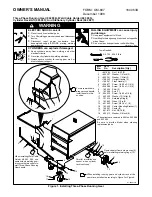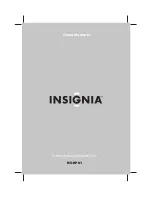
MA-SE-DCT3-01-02 Manual Doge CT3 eng rev2
Rev.4 Pagina 10 di 17
TECHNICAL FEATURES
Supplying
13,8Vdc (min13Vdc, MAX 15Vdc)
[
KIT : 230Vac (+15/-10%) 50Hz
]
Electrical isolation
II
Maximum consumption from mains
75mA
Recharge tension
13,0
13,8 V
Minimum tension of working
10 V
Maximum tension of working
15 V
Batteries
12 V – 1,2 Ah or 2,2 Ah
Current supply from supply unit
500mA
Current available for additional devices
350mA
Internal consumption – at control panel disarmed
30mA
- at control panel armed
40mA
- at control panel armed with status visualization
70 mA
- at control panel in alarm
1,2A
100 mA (consumption of the battery )
Flash consumption in alarm
90
10 mA (consumption of the battery)
Autonomy (without continuous visualization)
50 hours with 12V 2,2 Ah battery
Balance resistance (single)
5k6 Ohm
Output of system status STI, Push Pull
+50mA / -100mA Max
Output alarm memory and anomaly, Open Collector
-100mA Max
Timer of switching off of the siren and alarm relay
3 minutes, can be set to 8 minutes
Frequency limits
See chart 12 (Sounds)
Acoustic power
See chart 12 (Sounds)
Duration of the Led flash
1.000.000 flash minimum
Conditions of humidity
from 20% to 100% of humidity
Material
Bottom in ABS
External cover in painted ABS and charged against UV
Internal cover in steel 1,2mm
Size
mm 155x100x53 (HxLxD)
Weight
2500 g
Operating temperature
IP protection
Tamper protection
From - 20 °C a +55 °C
IP 3X
Opening of the cover and removal from the wall, anti-
foam and (optional) anti-drilling
Mounting and Installation:
The sounder must be installed inside buildings by qualified personnel and taking into consideration all norms related to installation,
respecting distances and heights in order to obtain the best acoustic and visual efficiency.
Fix the sounder to the wall, through the 4 holes on the bottom of the housing (see picture 9). The screws are not given within.
For connecting the cables use a joint in case of system with external pipes.
If necessary modify the setting of the dip-switches.
Connect the terminals to the control panel according to the pictures scheme.
Close the cover using the screw given.
Pict. 9
-
F
IXI
NG
HO
L
E
S



































